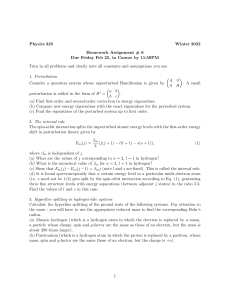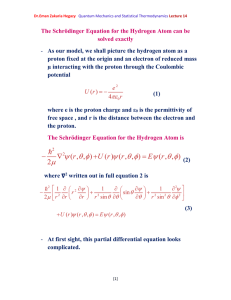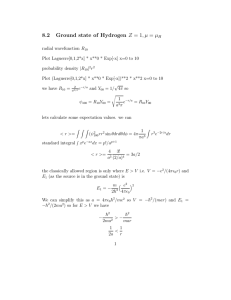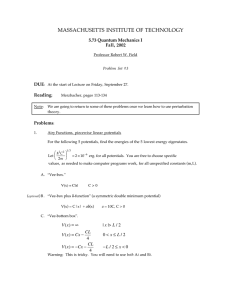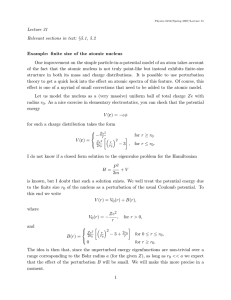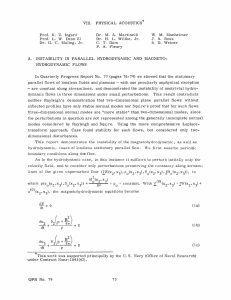Document 10477546
advertisement
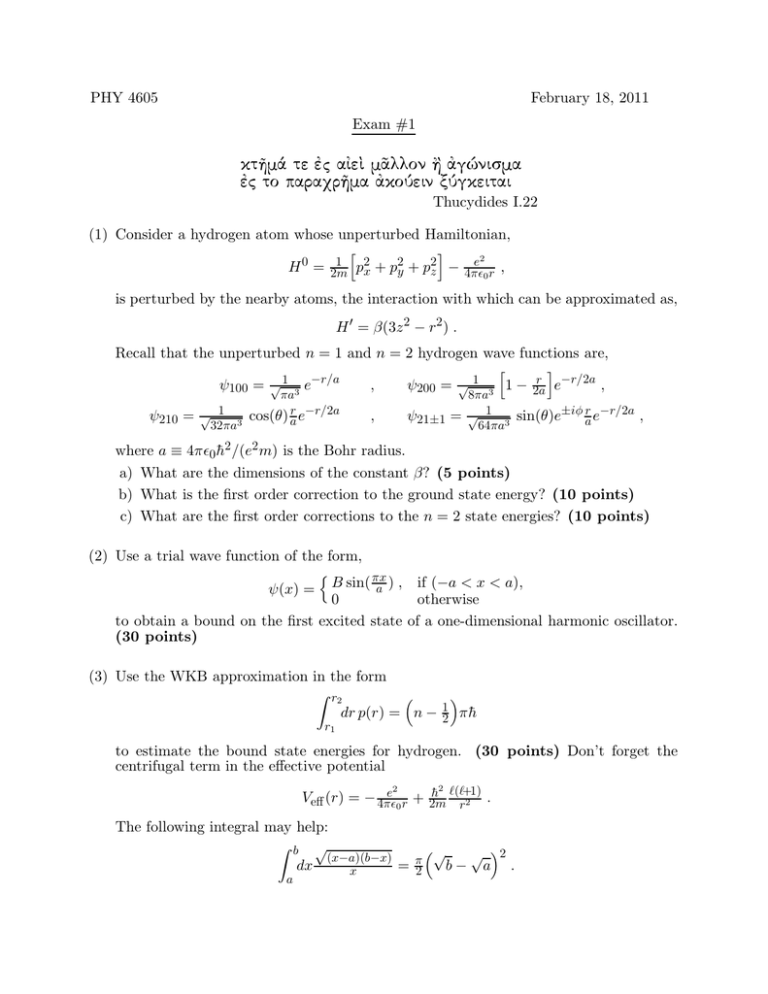
PHY 4605 February 18, 2011 Exam #1 kt¨m te âj aÊeÈ mllon £ g¸nisma âj to paraxr¨ma koÔein Ôgkeitai Thucydides I.22 (1) Consider a hydrogen atom whose unperturbed Hamiltonian, h i 0 2 2 2 1 e2 , H = 2m px + py + pz − 4πǫ 0r is perturbed by the nearby atoms, the interaction with which can be approximated as, H ′ = β(3z 2 − r 2 ) . Recall that the unperturbed n = 1 and n = 2 hydrogen wave functions are, h i r e−r/2a , , ψ200 = √ 1 3 1 − 2a ψ100 = √ 1 3 e−r/a ψ210 = √ 1 32πa3 πa cos(θ) ar e−r/2a , ψ21±1 = 8πa √ 1 64πa3 sin(θ)e±iφ ar e−r/2a , where a ≡ 4πǫ0 h̄2 /(e2 m) is the Bohr radius. a) What are the dimensions of the constant β? (5 points) b) What is the first order correction to the ground state energy? (10 points) c) What are the first order corrections to the n = 2 state energies? (10 points) (2) Use a trial wave function of the form, n πx ψ(x) = B sin( a ) , if (−a < x < a), 0 otherwise to obtain a bound on the first excited state of a one-dimensional harmonic oscillator. (30 points) (3) Use the WKB approximation in the form Z r2 dr p(r) = n − 12 πh̄ r1 to estimate the bound state energies for hydrogen. (30 points) Don’t forget the centrifugal term in the effective potential 2 2 ℓ(ℓ+1) e h̄ Veff (r) = − 4πǫ + 2m r2 0r . The following integral may help: Z b √ √ √ 2 (x−a)(b−x) π b − a . = dx x 2 a

